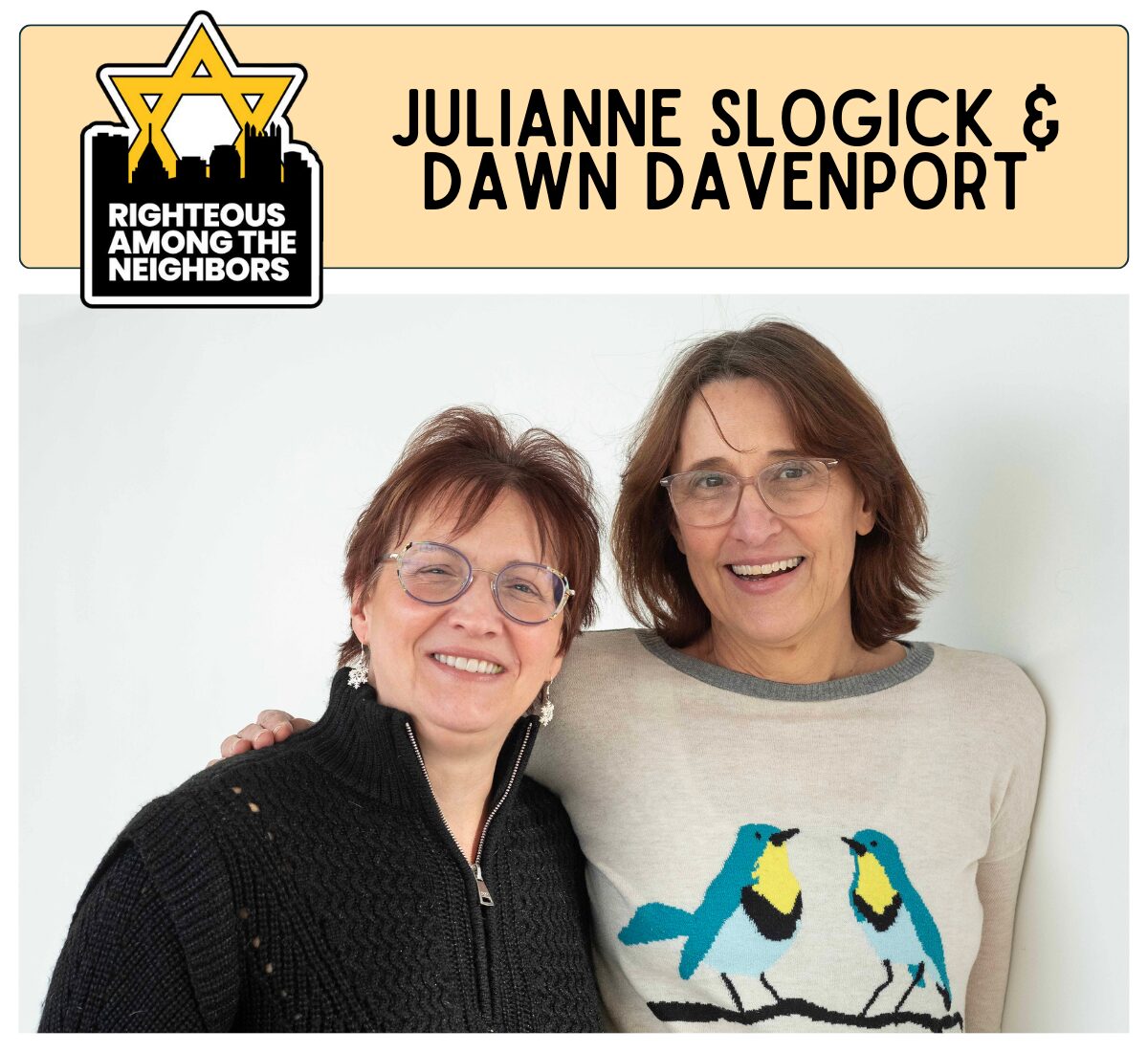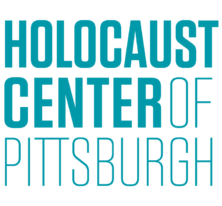
Photo by Brian Cohen
Profile by Brooke Murawski
Julianne Slogick and Dawn Davenport are two teachers at Mt. Lebanon High School with a passion for social issues, stories, and students. Because of this, they are the LIGHT coordinators at their school. Davenport works more on the in house leadership building and goals, while Slogick is tied to outside organizations because of her experience as the chair for the Global Studies Program. Most often, she works to see Holocaust and genocide education in classrooms and community events. At the time of this interview, she is working with the South Hills interfaith movement to sponsor an event with the Violins of Hope Pittsburgh, which features violins that Jewish musicians imprisoned in concentration camps and ghettos played.
Slogick has learned through training for Global Studies and LIGHT that first hand narratives or primary sources such as Violins of Hope are incredibly valuable in having conversations with students. For example, Classrooms Without Borders introduced her to the writings of Etty, who was a Jewish woman living in Holland at the time of the Holocaust.
“Diverse experiences during the Holocaust are really powerful points to access,” Slogick said. “I think that people’s stories are complex, people’s stories are great access points to study, and I think that they reveal the humanity of genocide and ethnic cleansing and other really terrible moments in history.” She believes that the more that we can know their stories, the more that we come familiar with their stories and “let ourselves into their stories.”
“The more that students do this,” she said, “the more that students can understand the tragedy of division, the tragedy of hatred.”
As an English teacher, Davenport equally sees the importance of highlighting individual stories.
“Oftentimes the only stories that we teach kids are stories that focus on division,” Davenport said. “Division is a great conflict. We have conflicts in our stories, and we see conflicts resolved. But one of the things that comes out of these tragedies is when people of different backgrounds work together, and that’s the part that people are always holding on to. The unity that happens afterwards.”
So, for Davenport and Slogick, one of their biggest goals with LIGHT is to help students see the unity before the tragedy. They also both stressed the importance of the students leading.
“In LIGHT, we help students develop ideas on how we can create a stronger sense of unity,” Slogick said. “There is a lot of excitement that I think we’ll see in the years ahead with LIGHT. It’s still kind of young and growing into itself here. But I’m excited about that.”
Even recently students have shown action. When a group of students went to a global summit called Eradicate Hate, they saw a documentary called “Repairing the World: Stories from the Tree of Life.” After seeing it, they told Slogick that they wanted to bring it to all the students. Now it is being shown in all social studies classes from grades 9-11 on Oct. 27, the anniversary of the attack.
“By being here and being present, not only can we work on some of the long term goals that LIGHT students set, but we can also be responsive when there is a need and interest on the part of the student leaders,” Slogick said. “And, we’re hoping, even in the school community at large.
For the long term, Slogick and Davenport are hoping to get the middle schools involved with LIGHT. They want middle schoolers to have their own LIGHT community, but also want the LIGHT students at the high school to begin to collaborate with and serve with the middle schools. They want to “build a culture in the district, a kind of norming of cultural experiences here in terms of what our school environment can be,” as Slogick said. “We’re connecting the school environments with the community, and growing student leaders.”
Davenport is doing this with an upcoming clothing swap through LIGHT.
“Something as simple as the clothing swap not only enlightens kids on climate issues, but also brings groups from all different areas of the high school together. The Gender Sexuality Alliance has something in common with the Black Student Union, which is compassion and care for people,” Davenport said.
To Slogick and Davenport, sharing stories of unity, creating unity, creating cohesion, is something that doesn’t seem to happen as naturally until after a tragedy.
“We can’t just keep living in a responsive society, one that responds to tragedy, and when there isn’t tragedy we’re all happy,” Davenport said. Working with LIGHT and with the students, “we’re creating the unity before.”
